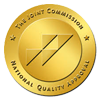Emotional abuse, a devastating form of maltreatment, often creates a vicious cycle that can span generations. Particularly for women, the scars of childhood emotional abuse can predispose them to entering similarly toxic relationships in adulthood. At The Pearl, we understand the complexities of this cycle and its interconnections with addiction and co-occurring disorders such as trauma. Today, we’ll shed light on why this pattern repeats and how it intertwines with substance abuse.
The Impact of Childhood Emotional Abuse
Emotional abuse can significantly disrupt a child’s emotional development and sense of self-worth, leading to an internalized belief that such treatment is a normal aspect of relationships. This skewed understanding of love and care may cause you to gravitate toward the familiar, even if you realize it is harmful.
Children who witness emotional abuse – whether directed at them or others in the family – learn to accept and incorporate the dysfunction. This learned behavior becomes a blueprint for their future relationships, making it difficult to recognize or challenge abusive patterns.
Emotional Abuse’s Link to Addiction and Co-Occurring Disorders
Many emotional abuse victims use drugs or alcohol to numb their pain or cope with unresolved trauma. Though self-medication may offer temporary relief, it can lead to addiction. People who experience abuse are also at higher risk of various mental health disorders, which can further fuel addictive behaviors.
Addiction can exacerbate the severity and frequency of emotional abuse within relationships. Alcohol and drugs impair judgment, reduce impulse control, and increase aggression, thereby contributing to a more intense and volatile environment.
Additionally, women living with addiction may find it harder to leave an abusive relationship due to factors like financial need, low self-esteem, or fear. Your abusive partner may also leverage your physical or psychological dependence on substances to control you, further entangling you.
Breaking the Cycle
Emotional abuse does not have to be self-perpetuating. It’s possible to reclaim your mental health and happiness with these tips.
- Awareness and education: Understanding the signs of emotional abuse and its impacts is the first step in breaking the cycle. Education on healthy relationship dynamics is crucial.
- Professional help: Therapy can be pivotal in addressing the trauma of emotional abuse and co-occurring addiction. It provides tools for healing and teaches you healthier coping mechanisms.
- Support systems: Building a robust support network is essential. Friends, family, or organizations dedicated to abuse survivors can offer the necessary resources.
- Empowerment and self-care: Empowering yourself, establishing boundaries, and rebuilding self-esteem can pave the way for healthier relationships in the future.
A Fresh Start Awaits
At The Pearl, we provide a safe environment for women grappling with the aftermath of emotional abuse and its related challenges, including substance use disorders. If you or someone you know is caught in this cycle, reach out to us. Understanding the cycle of emotional abuse and taking steps to break free from it are vital for healing and reclaiming control over your life.




